Our day on Egilsay
When I mentioned to my son Robbie that we were going to Egilsay I was surprised that he knew about the island. Egilsay is small, and tricky to get to, but it is tied to one of the most well-known stories in Orkney’s history; the martyrdom of St Magnus. Robbie had been taught the story in his Primary School and was keener than I thought he might be at the prospect of visiting.
We reached a gate to Canquoy beach and opened it. There below us was the most beautiful pristine white sand and tropical blue waters
The name Egilsay comes from the Old Norse for Church Island, and as we approached the island by ferry; we could see St Magnus Church from quite a distance away. It has a tall spire which was once a beacon for pilgrims.
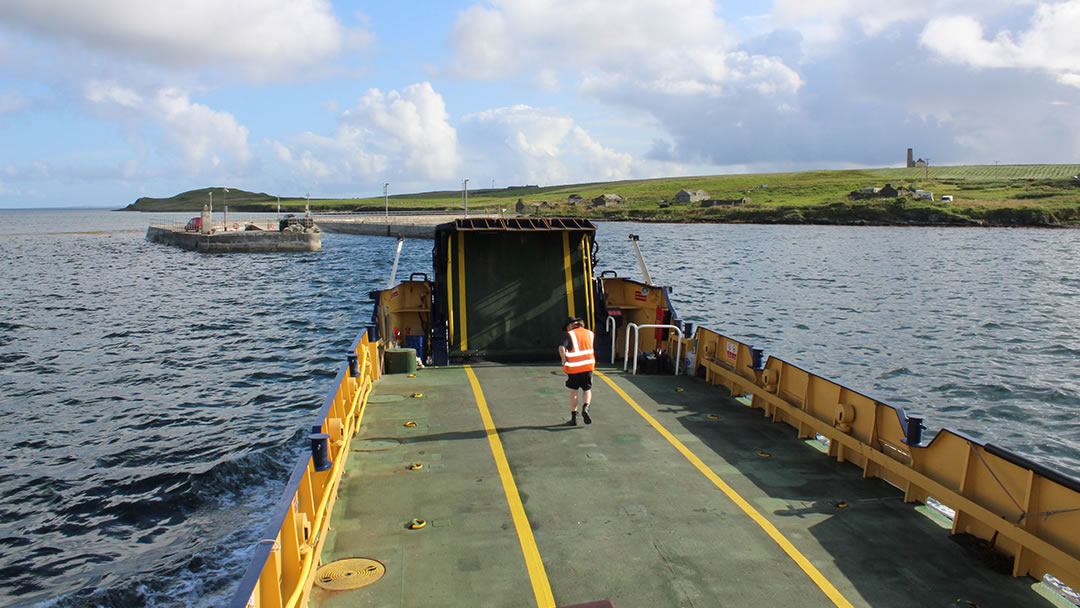
To reach Egilsay we took an Orkney Ferries ship from Tingwall on the Orkney Mainland. It sails first to Rousay and Wyre, which are closer, and once a year to the uninhabited island, Eynhallow. Robbie and I set sail at 08.20 in the morning and arrived in Egilsay at 09.30. We would be on the island until 16.55, so we made sure we brought plenty of food and drink.

It was a lovely sunny day towards the end of August when we disembarked the ferry. The water around Egilsay’s coast is quite shallow, so the pier reaches quite far out, away from the island’s shore. This allows the ferry enough depth to dock and sail away safely. We admired the clear water (and the sea life in it) and then set off uphill on narrow island roads towards St Magnus Church.

It’s possible to reach the church by the road, but we reached a stile, climbed it and followed a track along the edge of a field. Robbie startled a chicken that was roosting in the long grass.
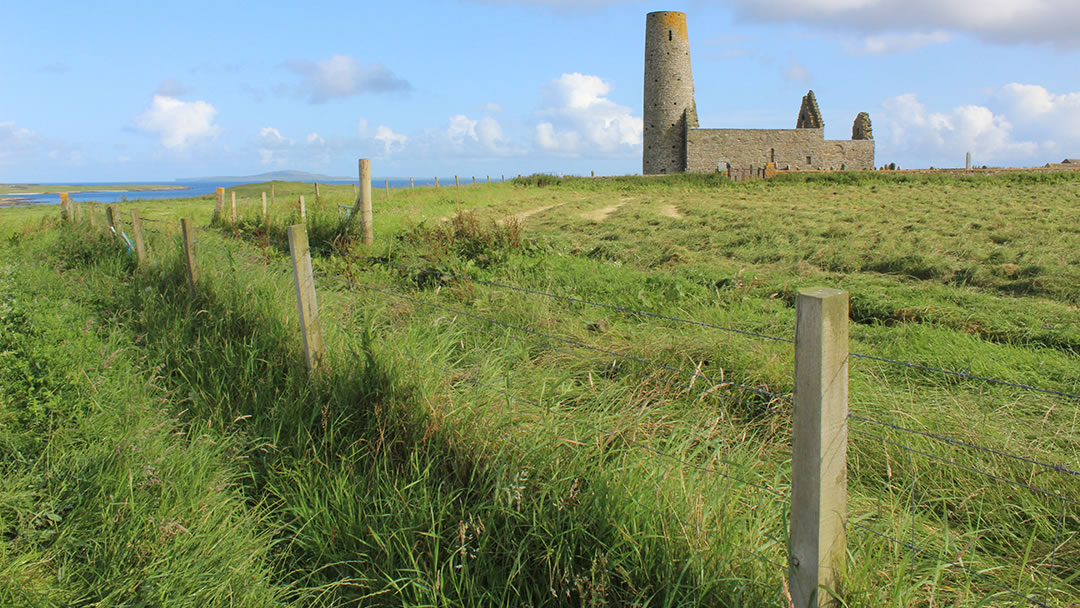
St Magnus Church stands on a high ridge and as we approached we were awed by it’s 15m tall stone tower. It’s a fantastic old church which was built in the 12th century and is surrounded by a handful of graves. It is no longer in use, however visitors can still go inside the building.
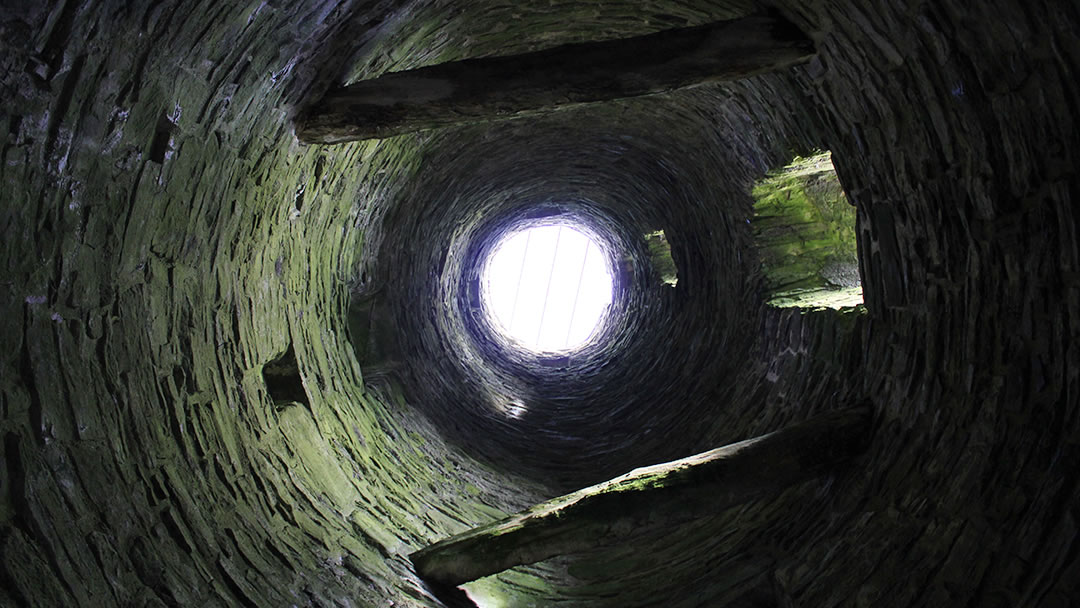
You can even stoop and enter through a gate into the tower. It’s not possible to climb the tower, but when standing inside it looking upwards, it’s hard not to feel a sense of awe. In former years, the tower was capped (possibly housing a bell), which made the church 5m taller!
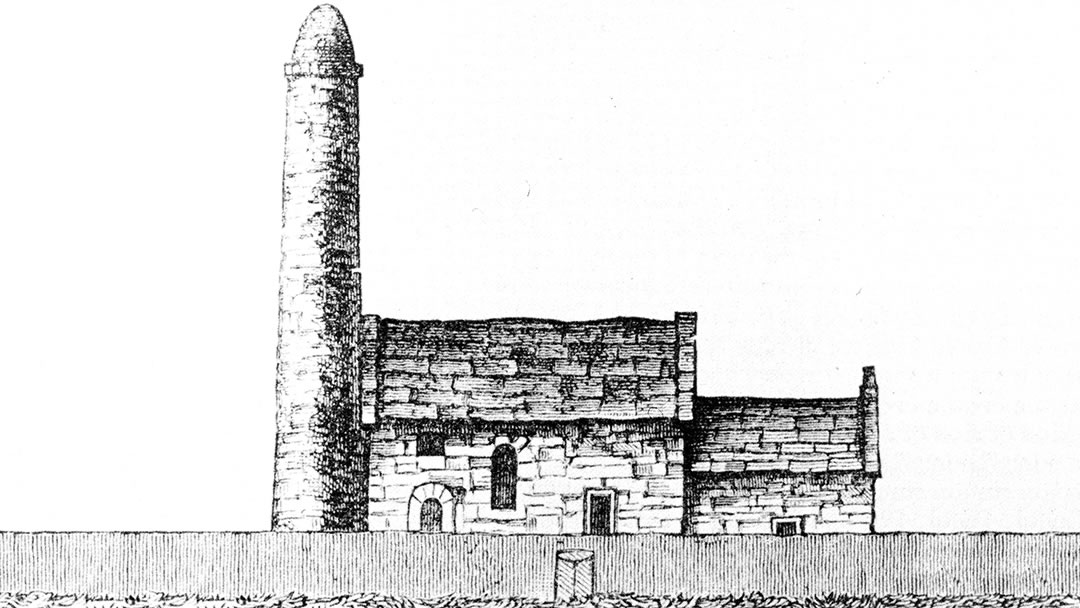
The design of St Magnus Church was influenced by German and Danish churches, and the fine stonework on display indicates how wealthy Orkney was during Norse rule. The church once had a flagstone roof but this was removed in the 1800s. St Magnus Church in Egilsay is of great historical importance because it has hardly been altered since the 1100s.

Orkney’s patron saint St Magnus was a Viking earl who lived at a time when the Northern Isles belonged to Scandinavia. However he shared his earldom (between 1103 and 1117) with his cousin Haakon. Attempts to share power and to rule the islands in peace failed, and supporters of the two men began to fight bitterly. Peace was restored and a parlay was organised; the two parties were to meet in Egilsay with a handful of men.
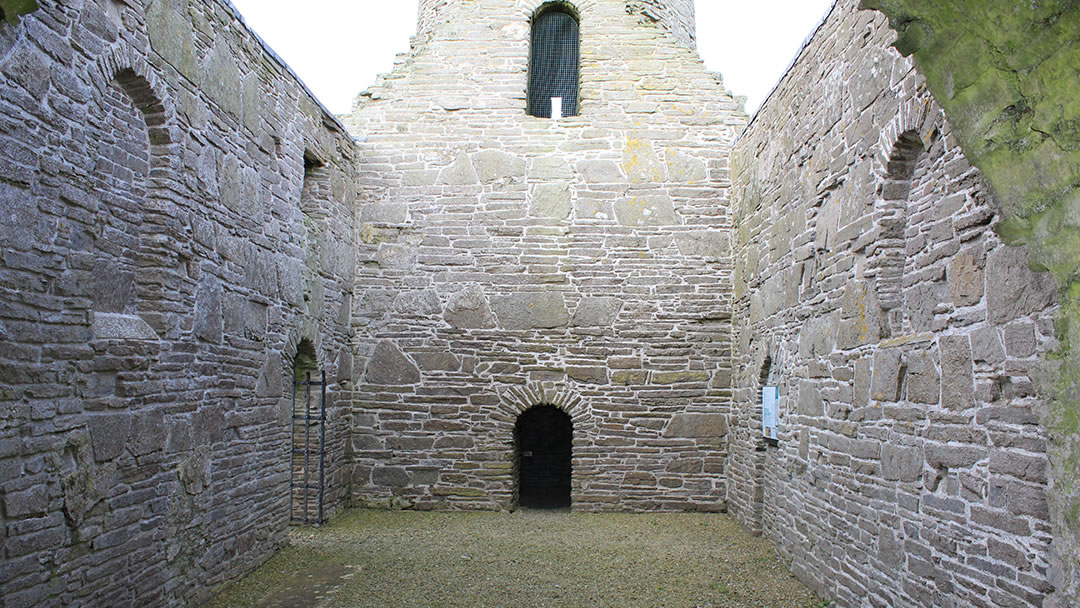
When Haakon arrived with eight ships of armed men, it was clear that he did not intend to hold a peaceful meeting. Magnus’ men offered to defend him, but Magnus refused. When Haakon’s men arrived to capture Magnus, he did not hide.
Three solutions were suggested; that Magnus be banished to Rome or Jerusalem; that he would go to mutual friends in Scotland; or that Magnus be maimed and imprisoned. Haakon agreed to this, but the chiefs argued that there should only be one Earl, and that Magnus should be killed.
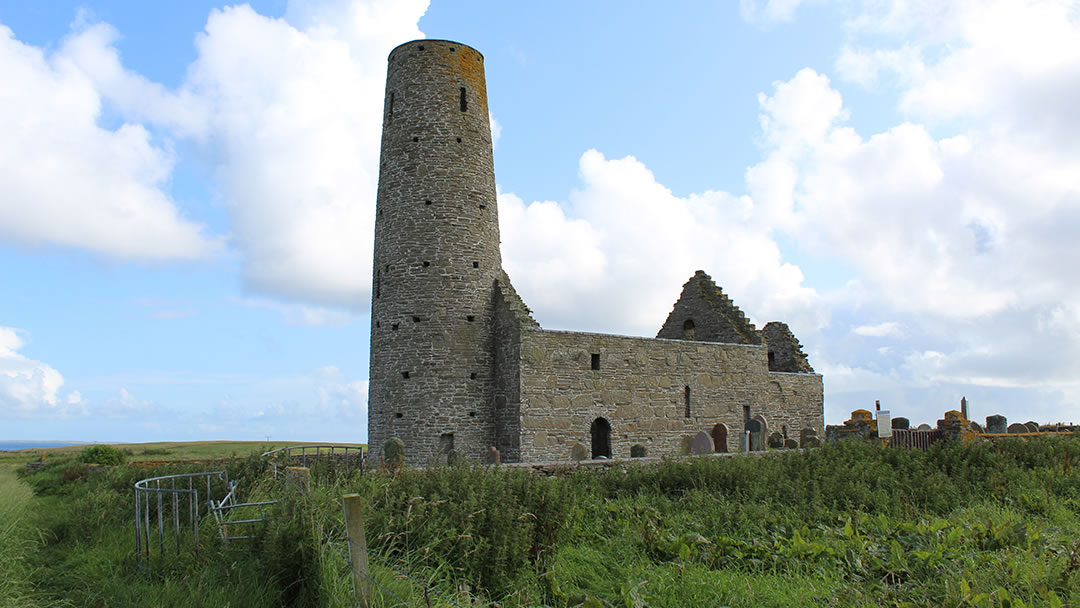
Haakon’s standard-bearer Ofeig was first given the job, but he refused to execute the Earl. Then Haakon’s cook, Lifolf, was ordered to carry out the gruesome task. The devout Magnus prayed and forgave Lifolf for his actions. Magnus was killed by an axe blow to the skull. This was at Easter in 1117.

Magnus’ body was moved to church in Birsay (where the bishops stayed). On the place in Egilsay where Magnus was slain, where previously there was moss and stones, there grew green grass. Stories spread of lepers, blind and possessed people being cured at his shrine on mainland Orkney. Eventually, in 1135 Magnus was canonised.
In Egilsay, as pilgrims began to arrive to celebrate the saint, the present church was built on top of an old one and dedicated to Magnus. In 1137, Magnus’ nephew built a cathedral in his uncle’s name in the centre of Kirkwall, and his remains were moved there.

Back in the present day on Egilsay, Robbie and I left St Magnus Church and followed the road this time, enjoying views of the island, Rousay, Eday and Egilsay’s holms in the north; Kili Holm and the Holm of Stockness.

We walked toward the cenotaph, which is almost in the centre of Egilsay. This is a stone marker, built in 1937, which marks the spot where St Magnus was slain. It’s not far from the road at all, a short walk through a wild field, and the cenotaph was much larger than I had imagined; a good twelve feet tall!

On a fine leaflet about Egilsay, published by the RSPB, there was a reference to a beach on the east coast of the island, almost on the opposite side of the island from where the ferry arrived. Robbie and I decided to head there, and the road turned into a track, which got rougher and less visible the further we went. The fields here are apparently noisy with the rasping of corncrakes and the drumming of snipe, but unfortunately we didn’t hear any.

We reached a gate to Canquoy beach and opened it. There below us was the most beautiful pristine white sand and tropical blue waters.

We had a quick picnic here (there’s a table provided) and then had a fantastic time. We went paddling and exploring.

Robbie climbed the rocks around the beach and we found catchments of water that were deeper, and warmer than others.

We watched ferries steam past (Canquoy beach looks out on to the coast of Eday) and were watched ourselves by curious seals. Robbie was the happiest I’d seen him all summer and we could have stayed there all day!

We didn’t know this at the time, but apparently this spectacular sandy beach is popular with otters; so it’s worth looking down to see if you spot any footprints!

There were a couple of other places I was keen to see on Egilsay however, so we said farewell to Canquoy beach, and walked back to the road via an old house called Howan. This building is reputed to be on the site of the bishop’s residence which itself was on the site of an Iron Age broch. Once back on the main road we began to walk the length of the island; to the Loch of the Graand.

We reached a trig point which marked the highest point on the island. Though it is modest (a mere 35m!) we had some spectacular views of the surrounding islands.
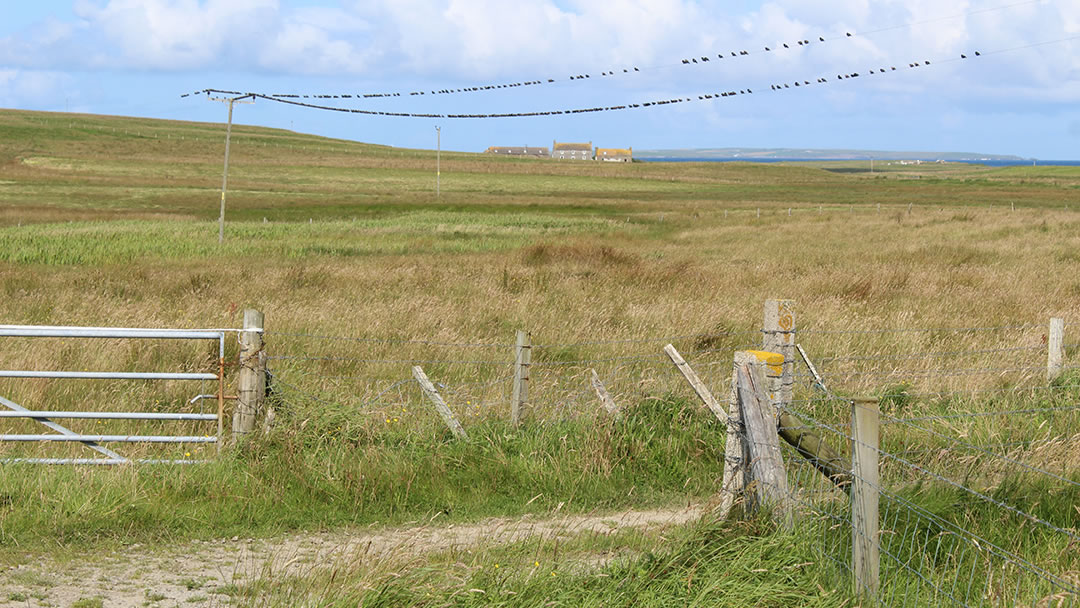
As we continued on, one farmer were working in a field; cutting grass and gathering it for the winter. It was very clear however, that Egilsay is not farmed very intensively; the Onziebust RSPB reserve covers 50% of the island.

Corncrakes (pictured below) suffer from modern mowing practices; as fields are mowed from the outside in chicks cannot escape. These elusive birds like to hide in long grass and are reluctant to escape over parts of the field that have already been cut. For this reason Egilsay, where many of the fields are left uncultivated, remains a haven for corncrakes. The UK’s rarest bee, the Great Yellow Bumblebee, can also be found here. Look out for a yellowish-brown bee with a distinctive band of black between the wings.

We made our way through Onziebust farm which now belongs to the RSPB. It’s still a working farm however, so be aware of livestock and machinery. Robbie’s legs were starting to hurt (he’s not a big fan of walking, though the island is only 1.25 miles wide by 3 miles long) however with a bit of encouragement we managed to push on to the loch.

We stopped first at a Neolithic chambered cairn called the Hillocks of the Graand. For anyone expecting a tunnel to enter (like Maeshowe or Unstan Cairn) there would be disappointment; the cairn is unexcavated; and now stands as a mound on the landscape, popular with sheep and topped with a hairdo of thistles. It’s Egilsay’s only Neolithic monument (dating from between 3500 and 2500 BC) and there’s also a Bronze Age burial mound nearby.

We continued on through sheep-filled fields to the Loch of the Graand, and when we reached it’s shores we decided it was time for a drink and a biscuit.

The Loch of the Graand is a popular site for breeding waders such as wigeon and teal; but we had arrived in mid August, and we were told later, they had just left. The winter birds would arrive soon to make the Loch of the Graand their home, but all was quiet during our time there.
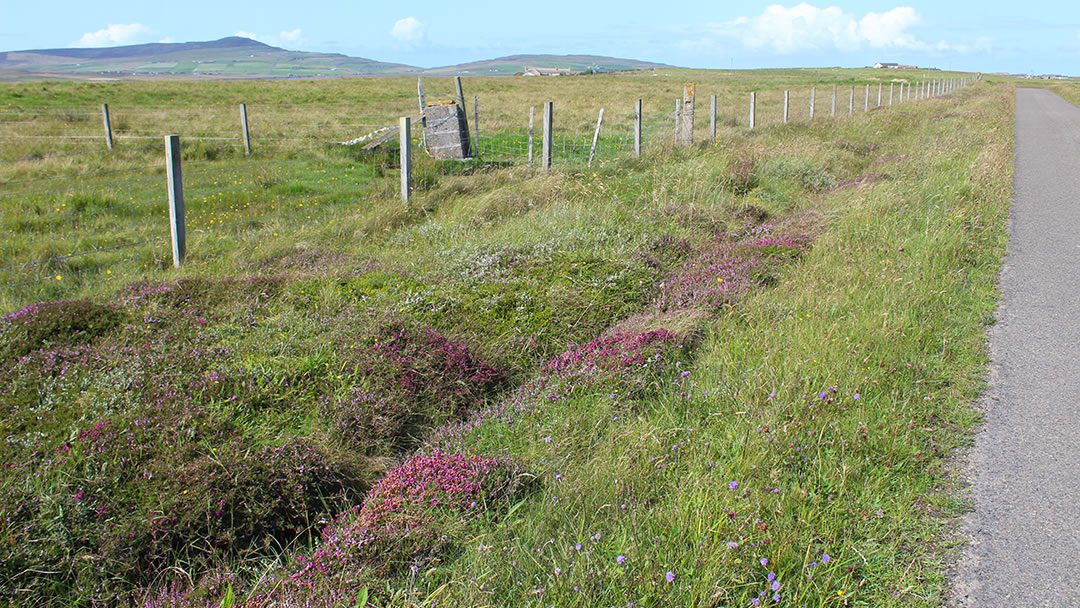
We headed back through Egilsay towards the ferry, having had a fantastic day. The roadsides were filled with colourful wildflowers and butterflies drunkenly flew amongst them. On the subject of drink, Robbie’s bottle of juice had run out, so we decided to make one final stop before going home; the Egilsay Community Centre for a top up.

It was open to the public, and what an incredible place it was. In the kitchen there were signs saying that you were welcome to help yourself within reason. We refilled Robbie’s juice and had a sit down in the fabulous communal area.

There was books and information to read; a computer (and reading glasses next to it in case you forgot your own!) Being of a certain age, I liked how thoughtful this was.

There was a hall and dining area set out with tables; and you could easily imagine a fantastic night at a harvest home or a wedding in the Egilsay Community Centre. We gave a donation for Robbie’s juice, and walked away thinking what a wonderful community and friendly island this was.

We waited for the ferry in the sun, and it arrived at 16.55 to take us home. We had a brilliant day in Egilsay; and the highlights were St Magnus Church and the beach on the east side. Robbie and I vowed to return.

Next time we would take the rest of the family too, for another fantastic trip to one of Orkney’s North Isles.
 By Magnus Dixon
By Magnus DixonOrkney and Shetland enthusiast, family man, loves walks, likes animals, terrible at sports, dire taste in music, adores audiobooks and films, eats a little too much for his own good.
Pin it!

